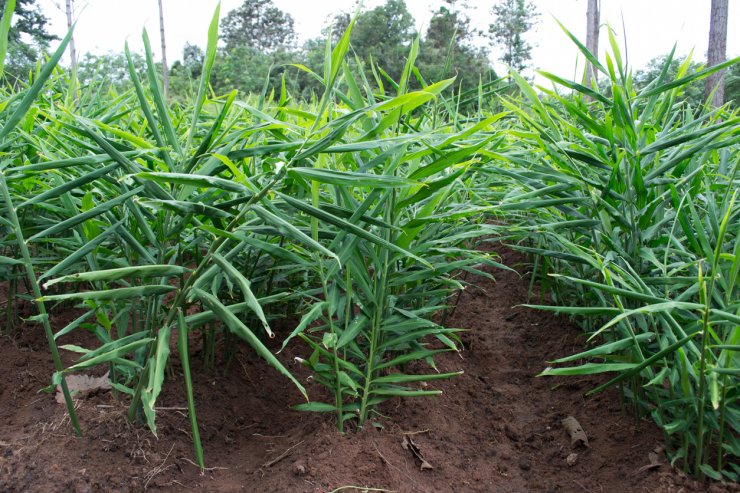
Commercially-grown ginger plants.
Ginger is a perennial, deciduous flowering plant that reproduces by producing rhizomes—underground stems—that can, in turn, produce roots and shoots and their own rhizomes. There are two broad categories of ginger: culinary, for cooking and eating; and ornamental, for the pure enjoyment of seeing the plants and enjoying their fragrance. We’re going to focus on the culinary varieties of ginger, the primary of which is Zingiber officinale.
Ginger is a tropical plant; it loves sunshine and humidity. Generally, ginger can thrive in USDA hardiness zones 7 to 11. If you live in a cooler zone, don’t despair; you can grow ginger indoors in containers, give it some outside time when there’s no threat of a freeze, and it will be fine.
One key thing about ginger: it takes a while for the plant to create new rhizomes. And by a while, we’re talking four to five months, sometimes more. If you start from the day you plant your first rhizome and wait until the leaves of the plant start dying back, you’ll go about 10 months before your harvest.
But don’t be discouraged! If you want to wait until the absolute end of ginger’s growing season, you can and you’ll wind up with rhizomes with light brown papery skin. But you don’t have to wait that long. You can harvest small pieces of the plant as they grow and use some of the “new” ginger in your cooking. It won’t be quite as strong and fragrant as more mature ginger, but it will still be fresh and delicious!
Have you tried growing ginger? Have you grown culinary or ornamental ginger, or both? Have you tried growing turmeric, too? Please share your experience.


 Previous
Previous

